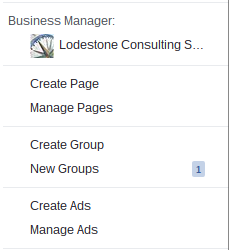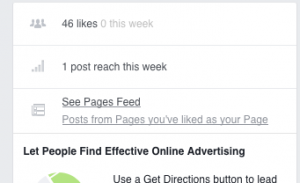Today we’re going to hammer out some quick tips on creating a successful Facebook ad campaign. Leave a comment about what’s worked for you and what hasn’t work. Did I miss a good tip?
Setting Up the Ad
Log into Facebook. If you haven’t signed up for Business Manager yet, you can click on the triangle in the upper right hand corner
 .
.
It then pops up a menu and you can choose Create Ads

Hopefully you’ve already chosen what to advertise. If not, start with driving traffic to your Facebook page and increase likes. This also allows you to build your tribe and get a better understanding of who they are and what they like.
When targeting your geographic region, keep an eye out for the size. You can use the meter. Start small and build it up when you have a successful Facebook ad campaign.
Always be sure you set a time limit and that you set a daily budget and an overall budget so there’s no surprises.
If you’re sending people to some place other then your Facebook page, make sure the URL that you put into the ad works.
General Ad Tips
Keep your copy short and well targeted. Is it consistent with where you’re sending them? Don’t be provocative to get clicks….that’s called “clickbait” and is being shut down by Facebook when they can find it.
Have different ads for your mobile customers then your desktop customers. It allows you to do better testing and find out what people respond to. For example, if you’re sending them to download a free report, ask yourself if mobile people would be willing to do that, or if they’d be more inclined if they were on their desktop.
Set up the retargeting pixel to allow Facebook to help you get your product, brand, or service in front of people better. Retargeting is like if someone shows up on your site to look at something, then a pixel gets set. When that person goes back to Facebook, they will see ads for what they were looking at.
Always be testing your images, colors, words, fonts, etc. until you find what people engage with. And then remember to turn it off and try new ads so people don’t suffer from ad blindness. That’s where they just don’t see an ad anymore because they’ve seen it so often.
When you have a good audience, let Facebook help you by creating audiences that are like your current audience. That is to say, it looks at people who like your page and what other interests they have, and then it creates an audience of others who like those interests but don’t already like your page. It’s a great way of pulling in new customers to your sales funnel.
Monitor your ads and review their performance. Don’t start it up and just let it go. Keep an eye on how it’s working and turn off those that are underperforming.













